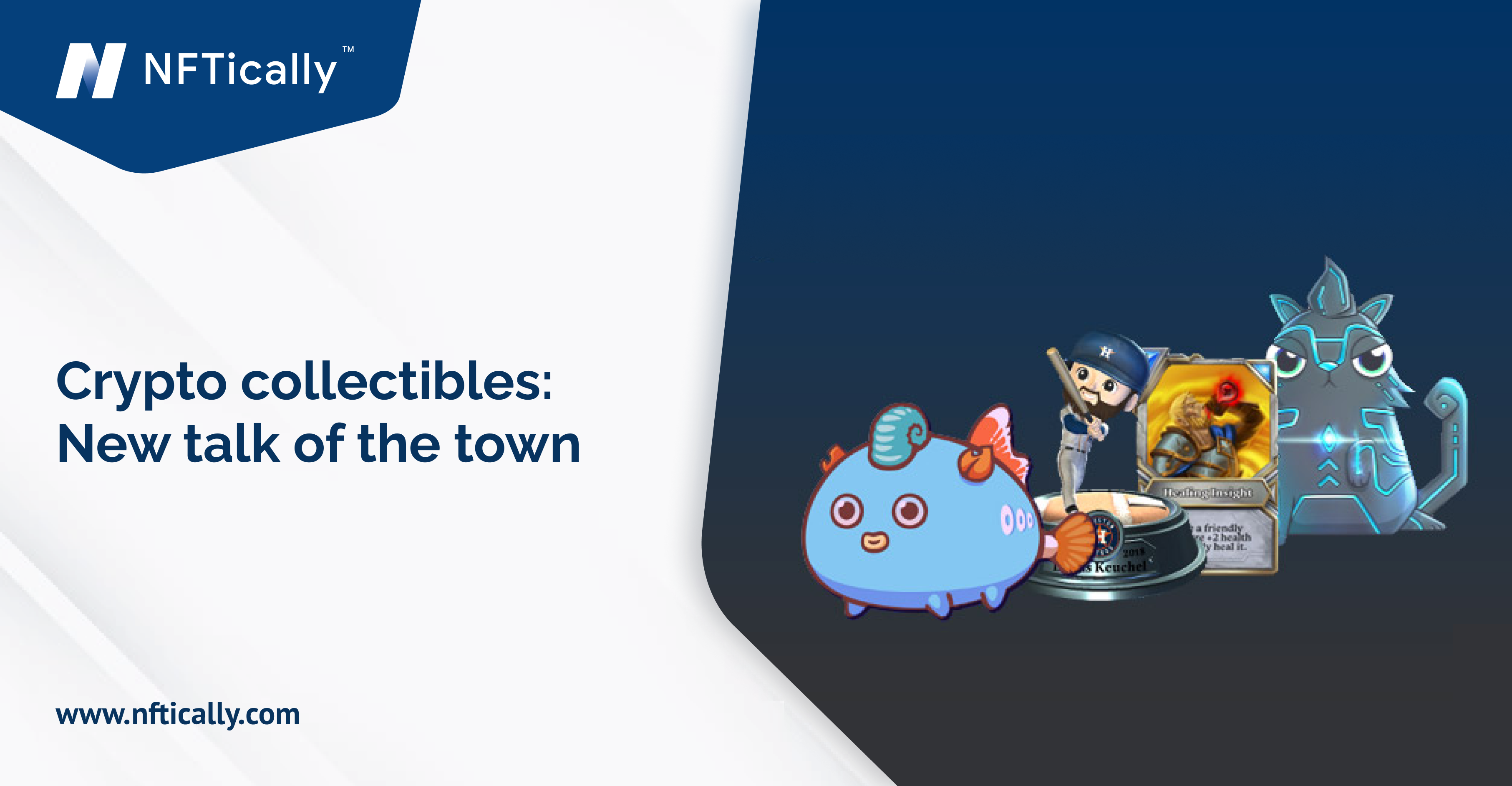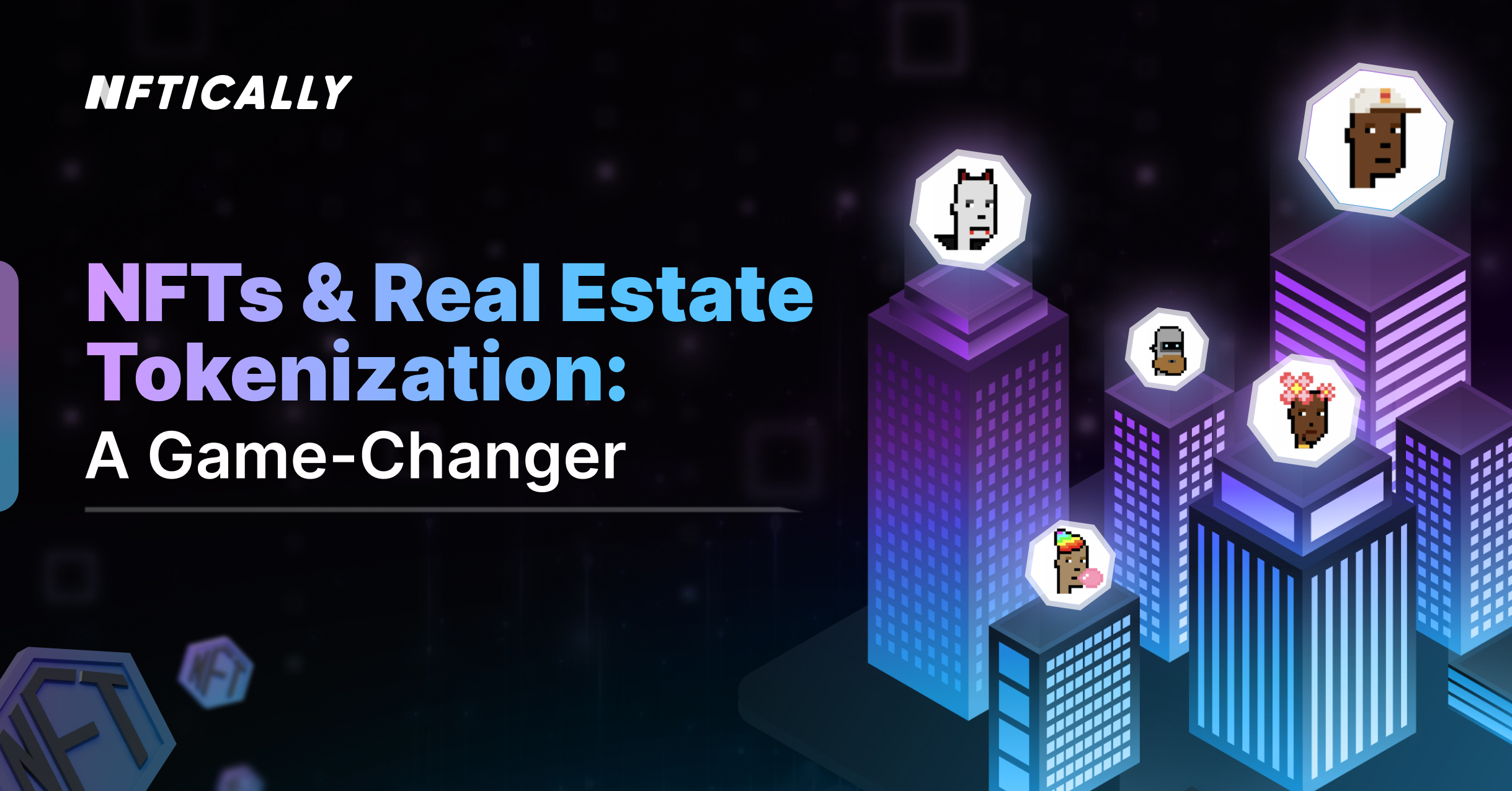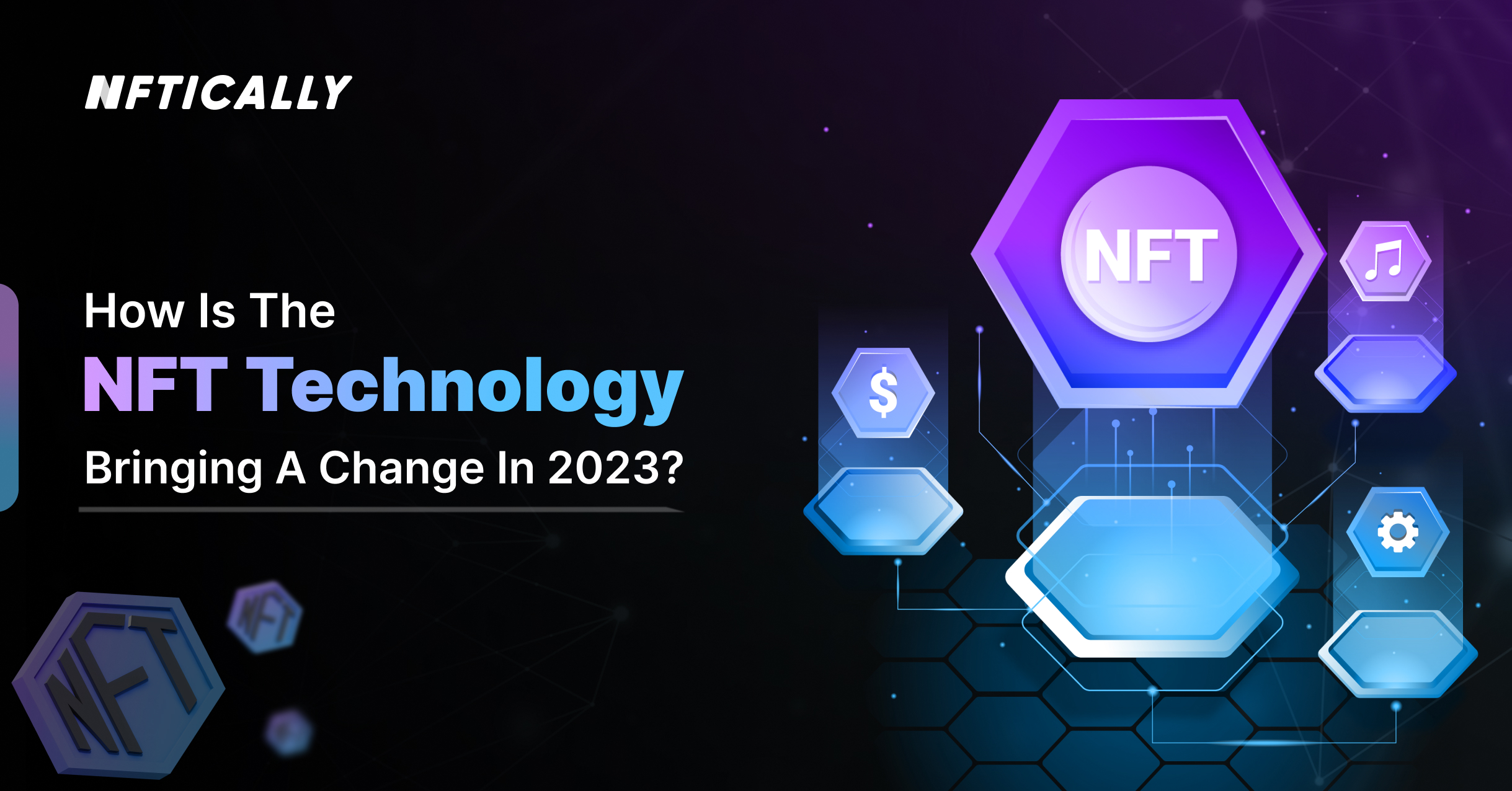- Crypto Collectibles NFT
- August 26, 2021
Crypto Collectibles: New Talk of The Town

The discussion of the city over the recent many months has been around digital or crypto-collectibles. One explanation of crypto-collectibles is:
A crypto-collectible is a cryptographically rare, non-fungible digital property. Unlike cryptocurrencies, which need all tokens to be similar, each crypto-collectable token is distinct or exclusive in amount.
Generally, crypto-collectibles are imaginable as real-life items such as pets or avatars. Non-fungible tokens (NFTs), often cited as crypto-collectibles, improve this understanding. The contrast with bitcoin and other tokens is that every NFT is distinct. Duplicates of NFTs are not possible. Crypto investors tell NFTs to develop their prices from how limited they are. They get reserves as collectors’ elements in digital wallets. Over art and sports, people have similarly found benefits for NFTs in primary estate and gaming.
How Does an NFT Work?
NFTs exist on a blockchain, a distributed world list that reports marketing. You’re possibly most aware of blockchain as the underlying method that composes cryptocurrencies possible.
Specifically, NFTs are generally holding on to the Ethereum blockchain. However, other blockchains help them as well.
An NFT is built from digital items that illustrate both substantial and non-physical entities, including:
- Art
- GIFs
- Videos and sports
- Collectibles
- Music
The growth of NFTs & Crypto Collectibles
NFTs can also work as quick deals. In “Every day,” the NFT provides the token author with a slice of future sales. In which Beeple earns 10%. This process can assist artists in ensuring a good source of earnings, even in a pandemic that has caused much tension. NFTs are not entirely new. The “Coloured Coins” in 2012 were the initial type of NFTs to come into the market. They are bitcoin tokens with additional functionality that enabled them to depict other properties on the blockchain.
“Cryptokitties” – digitally-created cartoon cats jointly created by NFTs and Digital Art in 2017. It can also be purchased and traded with NFTs validating possession.
How Is an NFT different from Cryptocurrency?
NFT stands for non-fungible token. It’s mainly built on operating the identical sort of programming as cryptocurrency, like Bitcoin or Ethereum, but that’s where the resemblance stops.
Real cash and cryptocurrencies are “fungible,” which means they can be exchanged or swapped for one another. They’re also the same in value—one dollar is forever worth a dollar; one Bitcoin is always identical to any other Bitcoin. Crypto’s fungibility formulates it as a trusted standard of performing transactions on the blockchain. NFTs are distinct. Each has a digital code which makes it difficult for NFTs to trade them—making them non-fungible.
Uses of NFTs or Crypto Collectibles
NFTs are probably in limited investments. Each NFT includes digital code that ascertains it is the only property with its particular digital character. This all-important factor helps build rare digital welfares. It can be utilized to symbolize unique tangible assets whose historical record of ownership can be traced. It could then be cryptographically ascertained through its underlying blockchain procedure. The chances for limited and rare articles that can be exchanged — such as digital art, collectibles, or game pieces — are enormous.
Uses for NFTs include:
- Building digital or crypto collectibles
- Governing possession of digital articles within blockchain-integrated events
- Verifying genuineness of digital art while enabling artists to conserve their copyright and intellectual equity
- Arranging a digital identity network that allows users to govern their data from one spot
- Promoting partial possession of high-value articles, such as real estate
Who owns an NFT, and who can create it?
Anybody can make an NFT — but that doesn’t indicate anyone will pay for it. For instance, The NBA collaborated with Canada-based Dapper Labs to build Top Shot. It sells digital stacks of cards that have been in great demand. Purchasing a pack tells that you then acquire the NFTs related to those cards. Dapper Labs tracks that ownership on the blockchain. They’ve been highly profitable. The packs sold out and cards getting on for tens of thousands of dollars.
Process of selling or buying the NFTs
The standard procedure to purchase or auction an NFT is as follows:
- Establish a digital wallet and buy cryptocurrency such as ether, operating an app, such as Coinbase or MetaMask
- Join the digital wallet to an NFT marketplace.
- Book the NFT for sale, or begin bidding on or buying parts of the content.
- Users can trade bids or purchase entirely, relying on the dealer and marketplace.
Future of Non-Fungible Tokens
Since then, NFT gaming has evolved heavily. The potential for NFTs has improved considerably beyond gaming. Businesses and blockchain programs are analyzing how to utilize Non-Fungible Tokens. Their uses can be recognizing, insuring, tagging, and permitting fractional ownership of digital and real-world articles. NFT usage cases can contain any example where there is a necessity for open license and traceability.
While NFTs still encounter difficulties concerning interoperability and scalability. The technology has exhibited its usage in verifying identity, shortage, and ownership for digital and real-world properties.
Takeaway
Digital collectibles open up blockchain technology to an entire fresh path outside of traditional financial requests. NFTs can be a crucial part of the blockchain ecosystem and the broader economizing by depicting tangible assets in the digital world.
The use cases are enormous, and it’s pretty reasonable that many developers will develop new and stimulating inventions for this promising technology.
Related Posts

NFTs and Real Estate Tokenization: A Game-Changer
Are you curious about the next major development in the world of non-fungible tokens (NFTs)? Well, it seems that real estate tokenization is poised to become the next big thing in NFTs. Lately, the concept…
- September 22, 2023

How is NFT technology bringing a change in 2023?
Although the crypto market faced some challenges at the beginning of 2022, often referred to as a “crypto winter,” NFTs continued to demonstrate impressive figures. By the end of the year, the total revenue generated…
- May 25, 2023
Recent Posts
- Revolutionizing AI Clones: Sunny Leone Teams Up with Kamoto.AI for an Unprecedented Debut
- The Evolving Landscape of NFTs: A Glimpse into 2024
- NFT Trends to Shape 2024: A Deep Dive into the Future of Digital Assets
- The Gaming Revolution: NFTs Level Up the Player Experience
- NFTs and Intellectual Property Rights: Navigating Legal and Ethical Challenges
Recent Comments
Archives
- January 2024
- December 2023
- November 2023
- October 2023
- September 2023
- August 2023
- July 2023
- June 2023
- May 2023
- April 2023
- March 2023
- February 2023
- January 2023
- December 2022
- November 2022
- October 2022
- September 2022
- August 2022
- July 2022
- June 2022
- May 2022
- April 2022
- March 2022
- February 2022
- January 2022
- December 2021
- November 2021
- October 2021
- September 2021
- August 2021
- July 2021
Categories
- $ECOM
- 3D NFTs
- AI Characters
- Airdrpos
- Bitcoin
- Blockchain
- Blockchain Technology
- Buy NFTs
- Buying
- Crypto Collectibles
- Crypto Wallet
- Cryptocurrency
- Cryto Mining
- Digital Art
- Digital Assets
- Ethereum
- FAQs
- Features
- Generative Art Nfts
- ICO
- Invest in NFT
- Learn
- Metavatars
- Metaverse
- Minting
- NFT
- NFT 2.0
- NFT Art
- NFT Art Finance
- Nft auction
- NFT Communities
- NFT Crypto
- NFT crypto art
- NFT Drops
- NFT Games
- NFT gaming
- NFT Marketplace
- NFT Memes
- nft project
- NFT Royalties
- NFT Staking
- nft stocks
- NFT Store
- NFT Taxes
- NFT Trading Cards
- NFT Wallet
- NFTICALLY
- NFTs
- Non fungible tokens
- Non Fungile Tokens
- Ordinal NFTs
- Physical Assets
- Press Release
- Selling
- Solution
- Stablecoins
- Store
- Tensor Nfts
- Top Cryptocurrencies
- Uncategorized
- Web 2.0
- Web 3.0
- white label nft marketplace

